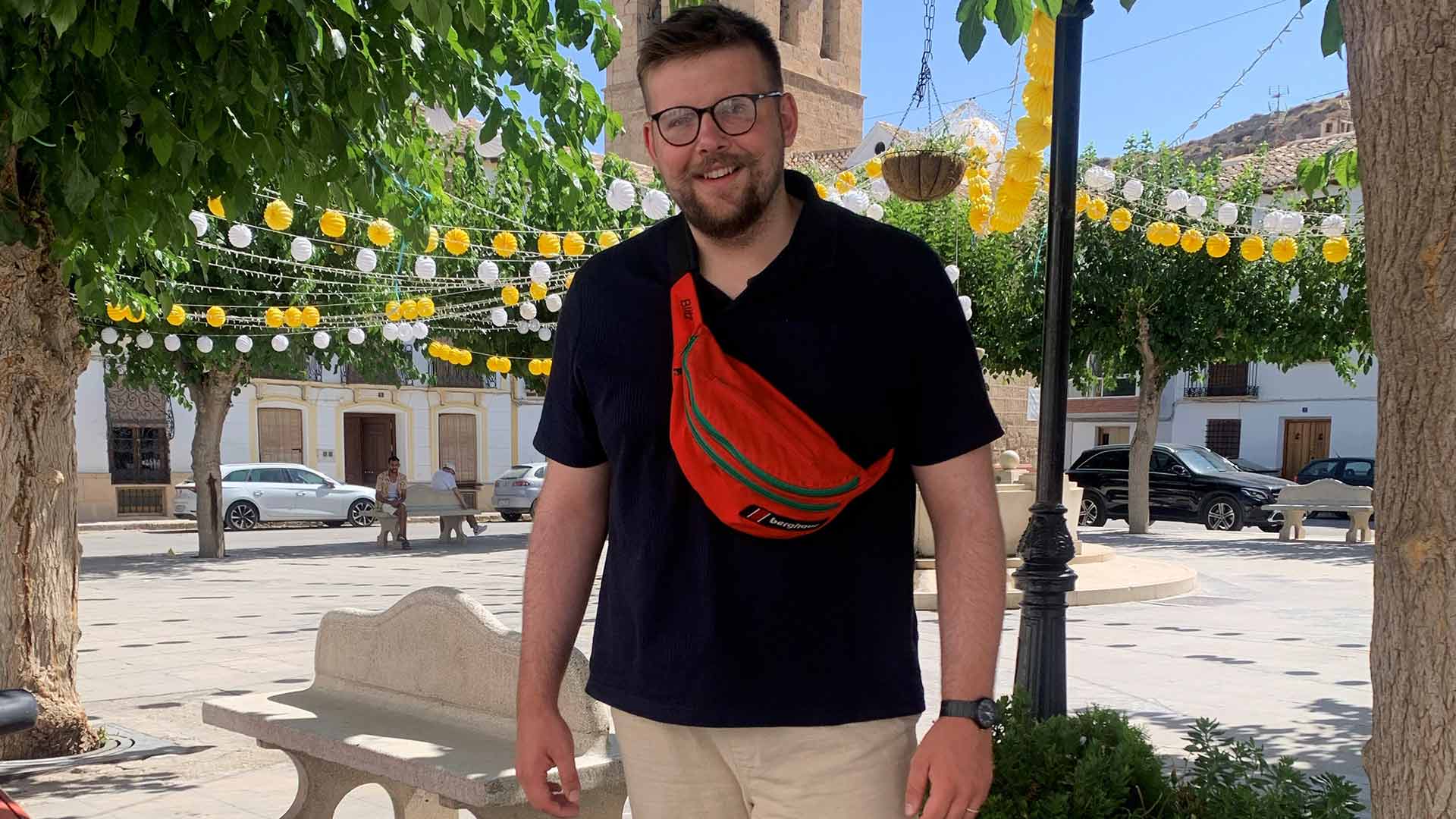
This June, Liverpool School of Medicine once again takes over Aintree Racecourse for clinical assessments involving hundreds of student doctors, simulated patients, medical examiners, technicians and support staff equipped with life-like mannequins, clinical equipment and enough tech to make sure the whole operation runs like clockwork.
As part of a 3-part series, don’t miss Approach your clinical assessment with confidence and Preparing for your clinical assessment, we caught up with Year 5 Student Doctor, and soon to be F1, Calum Voller to get his perspective on the Aintree experience and how to use it to your advantage to showcase your skills.
What are your biggest tips for developing yourself clinically throughout the academic year?
One of the most important and useful things I did was get a solid grasp on the ‘preclinical knowledge’. For example, auscultation findings made far more sense once I truly understood the cardiac cycle. Equally, I found it a lot easier to remember to ask about the various risk factors for DVT when I could relate them to Virchow’s triad. Always aim to leave no stone unturned.
That is, don’t just learn the ‘what’ of clinical practice, but also the ‘why’ and ‘how’. This will not only improve your scores but make you a better clinician.
How about specifically in the weeks before the clinical assessment, how did you prepare?
I practised with colleagues using stations generated by AI tools based on course content or third-party resources which helped simulate exam scenarios and reinforce structure.
And when it comes to the day itself? Does this differ whether it’s a clinical or written exam?
Both: Try to get a good night’s sleep. If you can’t, light revision might help ease your anxiety. Better yet, distract yourself with a film or chats with non-medical friends to ground you.
Clinical exam: Avoid caffeine if it makes you jittery. Pack your bag the night before, plan your route to the pick-up point, and give yourself plenty of time.
Written exam: Caffeine might be your friend here! Still, aim to arrive in good time and stay calm.
Thinking back to your first time at Aintree Racecourse, what struck you the most?
How friendly everyone was, from the support staff, the examiners and the actors. Everyone had a big smile and warm welcome.
For a student who hasn’t been to Aintree Racecourse before, what can you share about how the day will unfold?
You’ll meet at the Guild, hopefully with some familiar faces, and it’s best to chat about anything but the exam to keep relaxed. The coach to Aintree gives you a chance to decompress, and once there, you’ll get a briefing on logistics. The toughest bit is the wait before you’re called in. Again, chatting helps. But equally if you need some quiet time to ‘get in the zone’ then do so.
Once you’re outside your first station, time seems to fly. You’ll feel much calmer as soon as things get going. And then, before you know it, you're back on the bus heading home.
What do you find the most challenging about clinical assessments? How do you overcome this?
Honestly? Suspending disbelief. I’ve never been great with make-believe or acting, so treating OSCEs like real-life consultations has always been tough.
I try to picture a real patient I’d built a rapport with, or someone I care about in the actor’s place and focus on how I’d want them to be treated, and how I would be feeling if I saw them in front of me.
What tips do you have on how to approach the various stations and switching from scenario to scenario?
Consultations/history: Strike a balance. Yes, you’re there to score marks, but also remember the clinical purpose of history-taking: to guide diagnosis, understand the patient’s context, and shape investigations or treatment plans. Ask questions that help you advance those aims, thinking like a doctor, not “just” like a student working through a tick list.
Examinations: Needs to be slick, showing you’ve done it before but without being overly rehearsed and robotic. Practicing needs to be both opportunistic (I.e. on placement, particularly for identifying signs, especially if you can find seniors who can observe and provide feedback), and focused - usually with colleagues where you can repeat many times and observe different techniques.
DOPS: Once again practice is key. There will be plenty of opportunities on placement but spending at least some time in the Learning Zone is a must to practice further and in a way that is best suited for OSCE. Have a think how you would explain certain things in patient friendly language, avoiding jargon.
Prescribing: a theme here, practice, practice, practice. Get used to using the chart provided by the university by using the prescribing tasks of the month etc. Know the top 5 or so drugs per organ system/specialty and their indications, contraindications, side effects and interactions, this reduces the amount of checking and helps you spot common exam pitfalls.
Finally, when going from one station to another, try to make it a fresh start each time regardless of what’s happened in the station before. It’s a new examiner and a clean slate, so just walk in confidently and smile!
Your biggest takeaway you’d like to share with students who are about to take their clinical assessment for the first time at Aintree.
Be proud of yourselves and how far you’ve come already. You’ve not chosen the path of least resistance or taken a shortcut going to medical school and putting yourself forward to train as a doctor. Hold your head up high, be professional, kind and compassionate and I’m sure you will do your teachers, the profession and yourself proud – good luck!
Thanks Calum! Some really great insights there! Take a look at further exam tips in the Clinical Assessment Handbook available on Canvas.